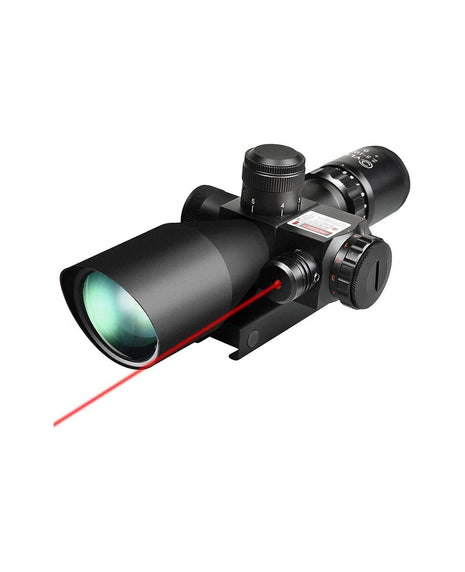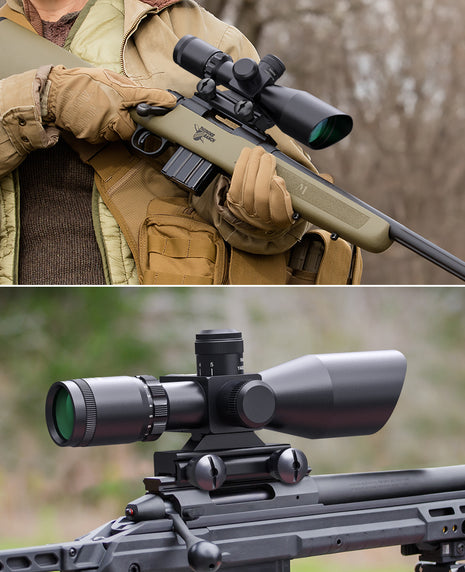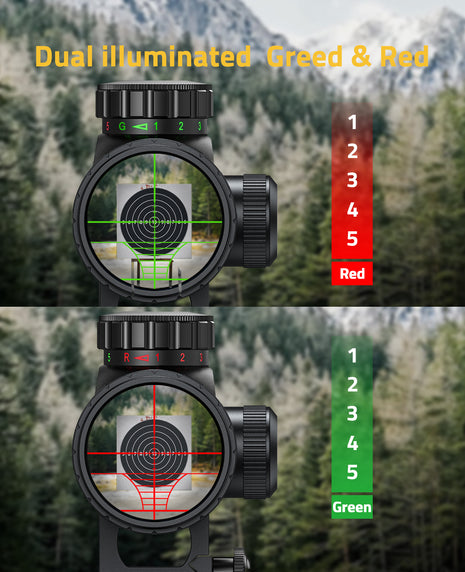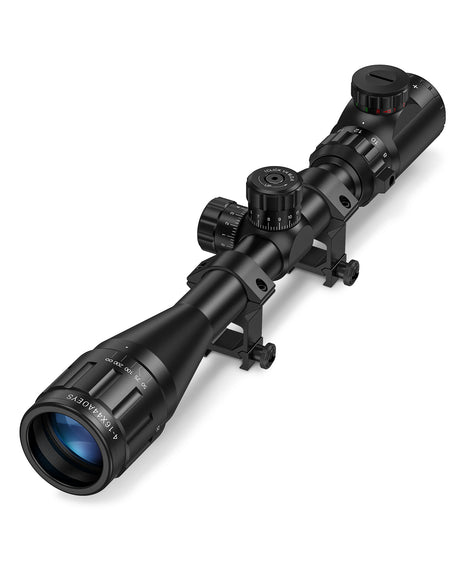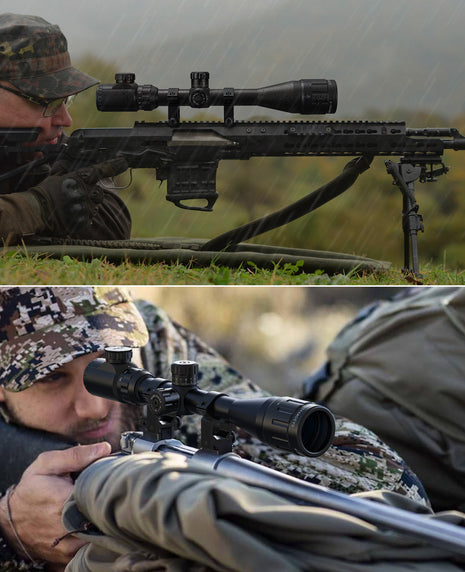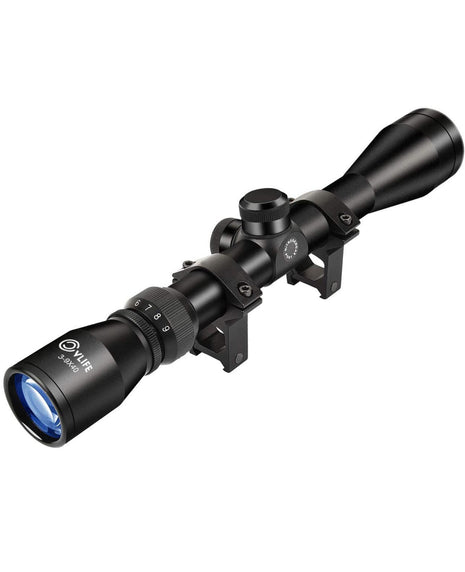How to Use BDC Holdovers for Different Bullet Weights?
- 15 min Lesezeit
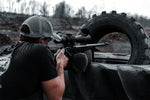
Master BDC holdovers for various bullet weights with expert tips and practical exercises to enhance accuracy in shooting. Learn more!
For AR-15 shooters who demand precision and consistency on the range, a Bullet Drop Compensation (BDC) reticle is an indispensable tool. Whether you are engaging targets at medium or long range, the integration of a BDC reticle enables you to account for the inevitable bullet drop that occurs over distance. However, many shooters do not realize that the efficacy of a BDC reticle can vary significantly depending on the bullet weight used in your rifle’s ammunition. In this comprehensive guide, we delve into the mechanics of BDC holdovers, explore how different bullet weights affect your point of impact, and provide actionable tips and case studies to help you master the use of BDC holdovers for improved accuracy.
What is a BDC Reticle and How Does It Work?
A BDC reticle is a type of reticle designed to compensate for the drop of a bullet over a given distance. It typically features a series of hash marks or dots below the center crosshair, with each mark corresponding to a specific range increment. When your rifle is zeroed—commonly at 100 yards—the BDC reticle provides holdover points that you can use at longer distances without having to adjust the scope’s elevation.
Standard BDC reticles are often calibrated for a specific bullet weight, typically around 55-grains for the popular 5.56 NATO round. This calibration assumes a particular muzzle velocity and ballistic coefficient. When you change the bullet weight—whether you switch to a heavier match round or a lighter training round—the bullet’s trajectory will change, potentially throwing off the alignment of the BDC marks. Understanding how the calibration works and how to adjust for different loads is key to consistently hitting your target.
Understanding Bullet Weight and Ballistics
Bullet weight, measured in grains (gr), plays a significant role in the overall performance and behavior of ammunition. The weight of the bullet affects its velocity, energy retention, and trajectory – all critical factors when considering the ballistic performance of a round.
For example, lightweight rounds such as 55-grains are typically faster and have flatter trajectories over short to medium distances, but they may experience more significant drop at longer distances. On the other hand, heavier rounds, such as those weighing 77 grains, often have higher ballistic coefficients. This means they are more aerodynamic, retain energy better over long distances, and may experience less wind drift; however, they tend to drop sooner due to their slower initial velocity.
The difference between light and heavy bullet weights can be dramatic. Consider that even a small change in bullet weight may lead to a misalignment of the BDC reticle's expected drop points versus the actual point of impact. This discrepancy can be the difference between a hit and a miss, particularly in precision shooting disciplines such as competitive shooting or tactical engagements.
Why Bullet Weight Affects Your BDC Accuracy
The BDC reticle is only as accurate as the ballistic data on which it is based. When a scope is calibrated for a specific bullet weight—say, a 55-grain round—the trajectory, including the bullet drop at various distances, has been predetermined. If you change to a heavier round, such as a 77-grain bullet, the inherent drop increases, and the reticle’s holdover points no longer correspond precisely to the actual trajectory.
This difference occurs because heavier bullets experience a higher drop rate due to gravity acting over time, compounded by differences in air resistance and internal ballistics such as muzzle velocity. When you fire a heavier round from a rifle zeroed for a lighter round, the bullet will typically hit lower than the reticle suggests at longer ranges. For instance, a target shot at 400 yards using a 77-grain load might strike several inches lower than predicted by a reticle calibrated for 55-grain ammunition.
Understanding these dynamics is crucial for making the correct adjustments. Many seasoned shooters rely on practical experience – shooting at known distances and recording their Data On Previous Engagements (DOPE) – to adjust their holdovers for different bullet weights accurately.
How to Use BDC Holdovers with Different Bullet Weights
Adapting your BDC reticle for various bullet weights involves a combination of proper zeroing, data collection, and on-range practice. Here is a step-by-step approach to help you manage different loads effectively:
Step 1: Zero Your Rifle with Your Preferred Ammunition
The first step is ensuring your rifle is properly zeroed using the bullet weight you intend to use most often. Zeroing at a specified distance—typically 100 yards—sets your baseline. Once you have a reliable zero, the BDC reticle’s holdover marks are calibrated for that particular load.
Step 2: Use a Ballistic Calculator
Modern ballistic calculators (such as Strelok Pro, Hornady 4DOF, or BallisticsARC) are invaluable for translating the raw data of your ammunition into practical adjustments on your scope. Input the bullet weight, muzzle velocity, ballistic coefficient, zeroing distance, and environmental factors (altitude, temperature, wind speed) into the calculator. It will provide you with the expected drop at various distances, allowing you to mark the discrepancies between the BDC reticle’s suggestions and actual trajectories.
Step 3: Record Your DOPE (Data On Previous Engagements)
Conduct live-fire sessions at a variety of ranges using the different bullet weights you plan to use. Document your data meticulously. Note the point of impact for each distance and load, and compare the measurements to the theoretical drop provided by your ballistic calculator. With enough data, you’ll begin to see patterns that indicate how each round’s performance deviates from the reticle’s calibration.
Step 4: Practice and Adjust
Once you have your DOPE, practice using the BDC holdover method with your AR-15. Choose a target at a known distance, then adjust your holdover mark based on the bullet weight you’re using. With repeated practice, your muscle memory and sight adjustments will become second nature, allowing you to account for bullet weight differences on the fly.
Many shooters even employ a system of quick-reference range cards or even label their scope adjustments with non-permanent markers to visually remind them of the appropriate holdover for each round type.
Case Studies: Light vs. Heavy Rounds
To better illustrate the impact of bullet weight on BDC accuracy, consider the following case studies. Both examples involve an AR-15 rifle originally zeroed with a 55-grain round.
Example 1: 55-Grain FMJ Rounds
With a baseline 55-grain FMJ round, the BDC reticle is designed so that the holdover marks are accurate. When shooting at 200, 300, and 400 yards, the scope’s reticle provides the correct amount of compensation, allowing the shooter to hit targets as intended.
In this scenario, no additional adjustments are necessary, and the shooter can rely completely on the manufacturer’s calibration. The consistency between the bullet drop calculations and the actual point of impact reinforces the value of using a round that matches the BDC calibration.
Example 2: 77-Grain OTM Rounds
Now, consider switching to a heavier 77-grain OTM load. Even if the rifle remains zeroed at 100 yards, the heavier bullet drops faster at longer distances. At 300 yards, for example, the 77-grain round may drop an additional 4 to 6 inches compared to the 55-grain round. At 400 yards, this discrepancy becomes even more pronounced, potentially resulting in a miss.
In practical terms, a shooter using a 77-grain round with a BDC reticle calibrated for 55 grains must learn to add extra holdover to compensate for the increased drop. This may involve mentally adjusting the reticle’s marks or, better yet, marking the difference on a range card that accompanies the rifle.
These case studies emphasize that while a BDC reticle provides a useful baseline, optimal performance is achieved only when the shooter’s data is integrated with on-range testing. Adjustments for bullet weight are necessary, even if they seem minor, as they can have a significant impact on performance in competitive or tactical environments.
Tips to Maximize BDC Accuracy Across Different Bullet Weights
Achieving the best accuracy with your BDC reticle when changing bullet weights requires a dedicated approach and attention to detail. Here are some expert tips:
- Stick to a Single Load When Possible: Consistency is key. If you use a specific bullet weight for your primary shooting discipline, keep it consistent across practice sessions.
- Develop a Range Card: Maintain a record of your DOPE for various distances and bullet weights. This reference card can help you quickly determine the holdover adjustments needed for different rounds.
- Use High-Quality Equipment: Investing in a precision scope with a clearly etched and illuminated reticle makes a huge difference. Many modern BDC scopes come with adjustable turrets that allow for fine tuning when switching bullet weights.
- Leverage Ballistic Software: Utilize ballistic calculators or smartphone apps. These tools let you input the specifics of your ammunition and environmental variables, resulting in accurate predictions of bullet drop.
- Practice Under Varied Conditions: Variables such as wind and temperature can further influence bullet drop. Practicing under different conditions will help you better understand how your bullet performs.
- Consult Experts: Join shooting clubs or forums where experienced shooters discuss their DOPE and adjustments. Peer insights can be invaluable in refining your technique.
With these tips in mind, your accuracy will steadily improve, as will your confidence in making real-time adjustments on the range.
Practical Drills and Exercises to Sharpen Your Skill
To put theory into practice, consider the following drills:
- Zeroing Drill: Start by zeroing your AR-15 with a 55-grain round. Once confirmed, switch to a heavier round and record the shift at 200 and 300 yards.
- Range Card Drill: Create a detailed range card for each bullet weight you intend to use. Mark down specific holdover adjustments that resulted in successful hits during your live-fire sessions.
- Multi-Load Session: On a single range day, fire several groups using different bullet weights. Compare the groupings and identify the adjustments necessary for each load.
- Environmental Simulation: Use indoor ranges or ballistic simulators if available, to practice adjusting holdovers under controlled conditions. This builds confidence before transferring the skill outdoors.
Regular practice with these drills will enable you to internalize the subtle differences between loads, ensuring that your BDC reticle becomes an extension of your shooting process.
In-Depth Example: Data Analysis with Different Bullet Weights
Imagine you have collected data over multiple range sessions. For a 55-grain round, you observe that your BDC reticle is spot on at 200, 300, and 400 yards. However, switching to a 77-grain load, your data shows consistent impact points that are lower than the reticle’s prediction—by approximately 4 inches at 300 yards and nearly 8-10 inches at 400 yards.
With these insights, you can adjust your holdover manually. For instance, when engaging a target at 300 yards with the 77-grain load, you would apply an extra holdover equivalent to the 4-inch discrepancy. Such detailed analysis not only improves your immediate performance but also contributes to a more rigorous shooting methodology over time.
This data-driven approach fosters confidence and ensures that every shot is informed by precise measurements, rather than relying solely on generalized assumptions.
Summarizing Key Takeaways
As we’ve explored, utilizing a BDC reticle effectively across different bullet weights requires a blend of knowledge, practice, and data analysis. Here are the core points to remember:
- A BDC reticle is calibrated for a specific bullet weight; deviations can cause significant impact point differences.
- Heavier rounds tend to drop more than lighter rounds, meaning that the standard holdover marks may need adjustment.
- Zeroing, ballistic calculators, and meticulous DOPE collection are essential components in making accurate adjustments.
- Practical drills, range cards, and long-term data tracking play a critical role in refining your shooting accuracy.
- Regular re-zeroing is advisable whenever changing ammunition loads to maintain consistency.
By internalizing these principles and committing to regular practice, you can overcome the challenges posed by differing bullet weights and ensure your BDC reticle works to your advantage.
Conclusion
Mastering the use of BDC holdovers for different bullet weights is a journey that combines theoretical knowledge with practical experience. By zeroing your rifle for a specific load, utilizing modern ballistic calculators, and recording your DOPE from live-fire sessions, you can tailor your shooting technique to account for the nuances of various bullet weights.
The challenge lies in the details—from understanding how a slight shift in bullet weight can significantly change your point of impact, to knowing when to re-zero your scope for optimal performance. With dedicated practice and an analytical approach, the BDC reticle becomes a powerful tool in your shooting arsenal, enhancing your precision whether you’re on the range, in competition, or out in the field hunting.
We encourage you to experiment with different loads, keep detailed records, and embrace the continuous learning process inherent in precision shooting. Your commitment to data-driven adjustments will not only improve your performance but also deepen your understanding of ballistics and shooting theory.
Thank you for reading our comprehensive guide on how to use BDC holdovers for different bullet weights. Remember that every shooter’s experience is unique, and the pursuit of perfection is ongoing. Keep practicing, keep testing, and let your data guide you to greater accuracy and confidence on the range.
FAQ
Q1: Can I use the same BDC reticle for different bullet weights on my AR-15?
A1: Yes, you can use the same BDC reticle; however, its calibration is based on a specific bullet weight. If you switch to a significantly heavier or lighter round, you’ll need to adjust your holdovers accordingly or re-zero the scope.
Q2: Do I need to re-zero my AR-15 every time I change ammunition?
A2: While not mandatory, re-zeroing is highly recommended when switching bullet weights. It ensures that your reticle’s holdover marks are aligned with the actual bullet drop, leading to greater precision.
Q3: How can ballistic calculators help me with BDC holdovers?
A3: Ballistic calculators allow you to input your bullet’s specifications, environmental conditions, and zeroing distance to predict the bullet drop accurately. This data helps you fine-tune your holdover adjustments based on different bullet weights.
Q4: Are there any resources or communities where I can learn more about BDC reticles and ballistics?
A4: Yes, numerous online forums, shooting clubs, and websites are dedicated to precision shooting and ballistics. Joining these communities can provide valuable insights and shared experiences that will enhance your understanding of BDC reticles and ammunition performance.
Q5: Can switching bullet weights affect the wind drift experienced by a shot?
A5: Absolutely. Heavier bullets generally have higher ballistic coefficients, which may reduce wind drift. However, this effect also depends on other factors such as the muzzle velocity and the specific aerodynamic design of the bullet.
Tags
Das gefällt dir vielleicht auch
Blogs & Neuigkeiten
-

, Von C V How to Use BDC Holdovers for Different Bullet Weights?
-

, Von C V Is a 1-6x BDC Scope Better Than a 3-9x for AR-15?
-

, Von C V How to Zero an AR-15 Scope with a BDC Reticle
-

, Von C V What Makes Motion Awake Red Dot Sights Unique

